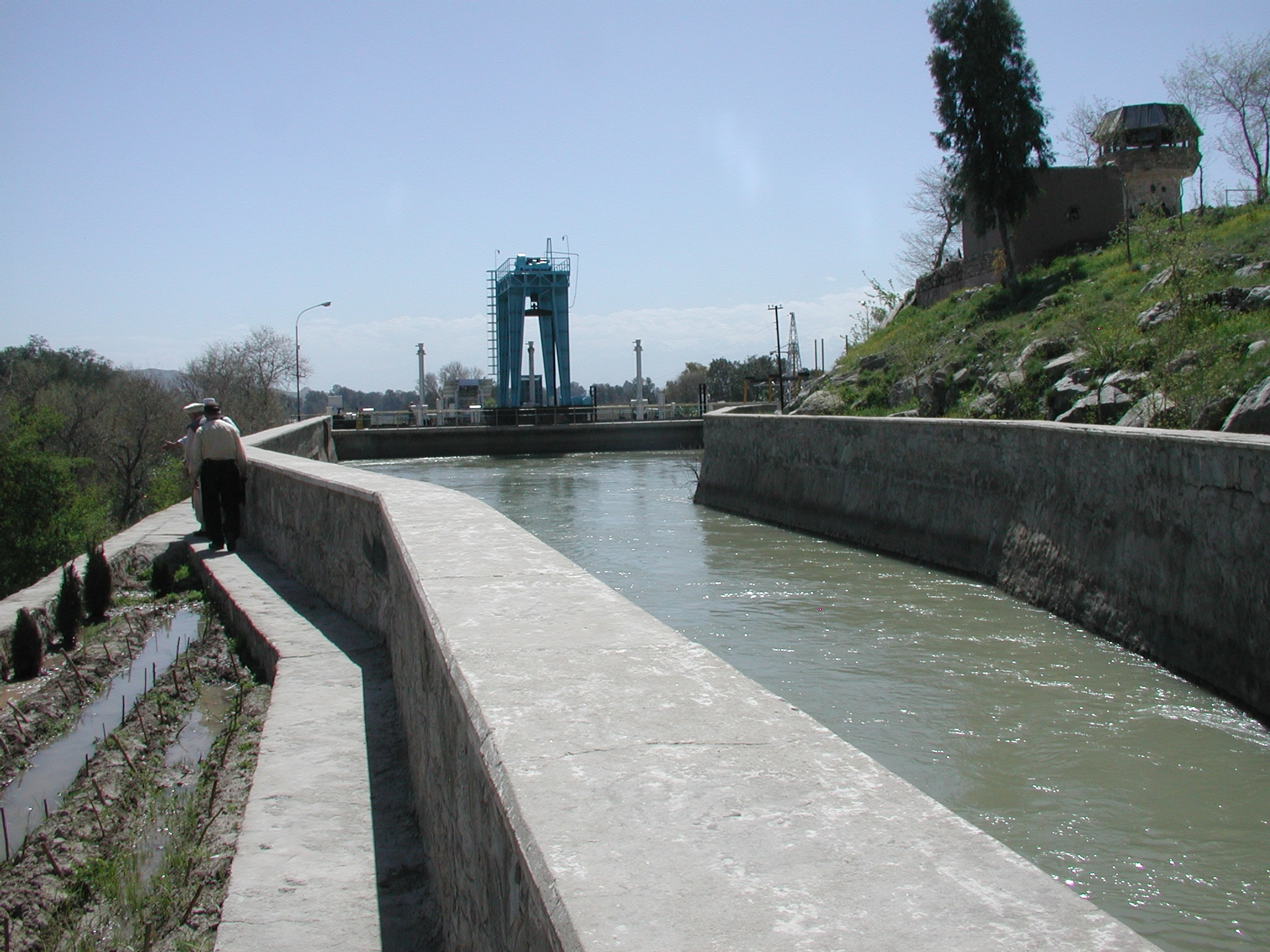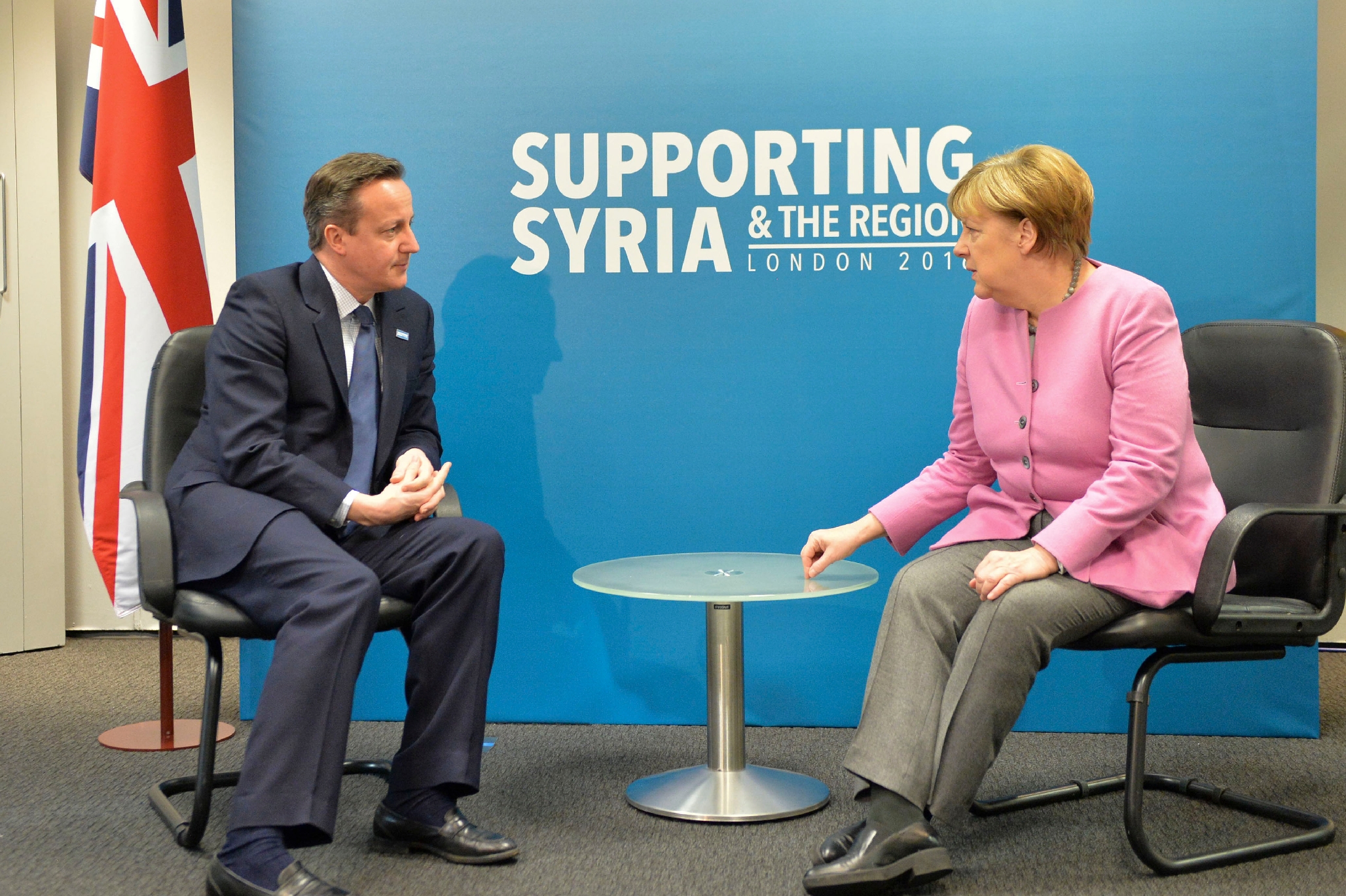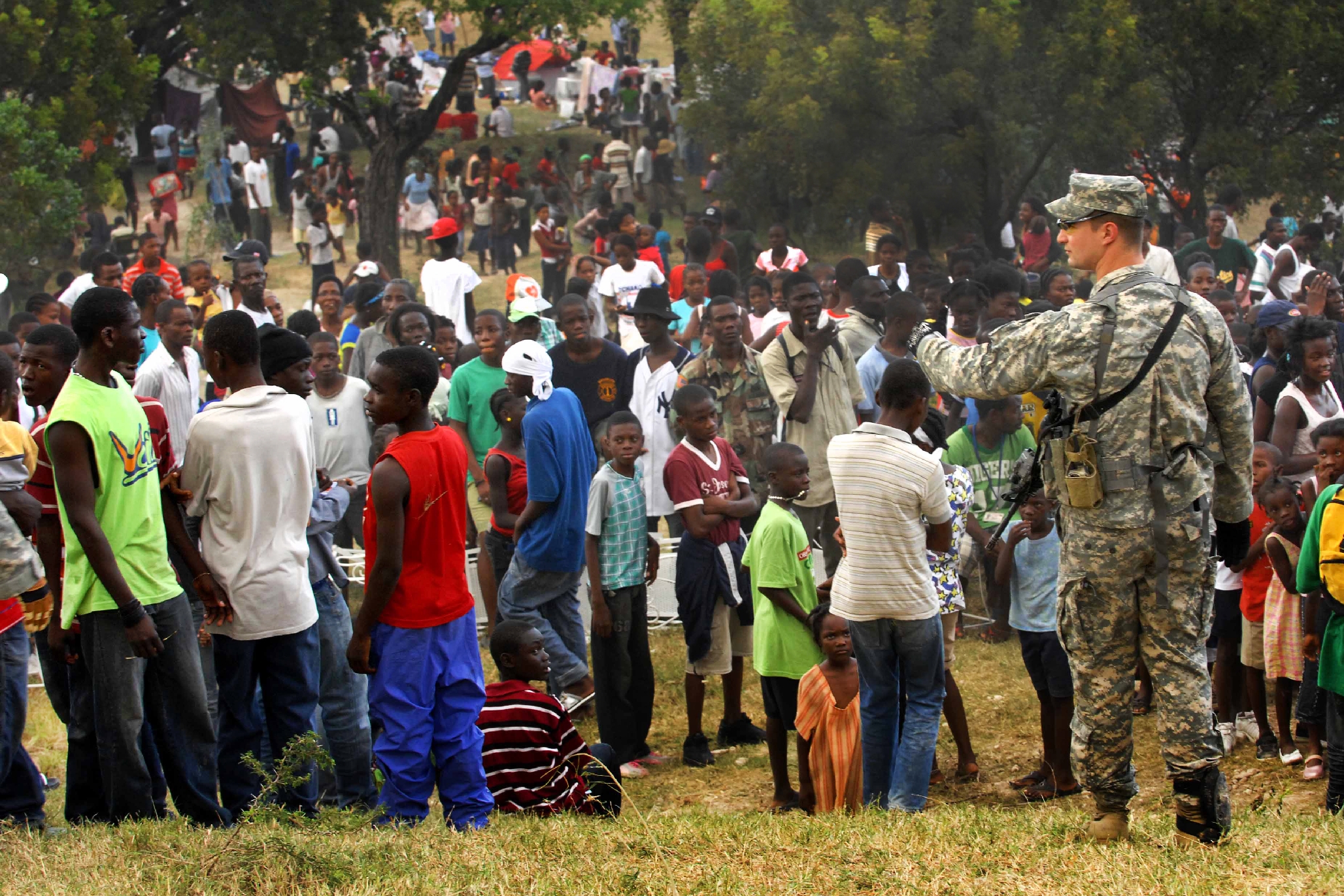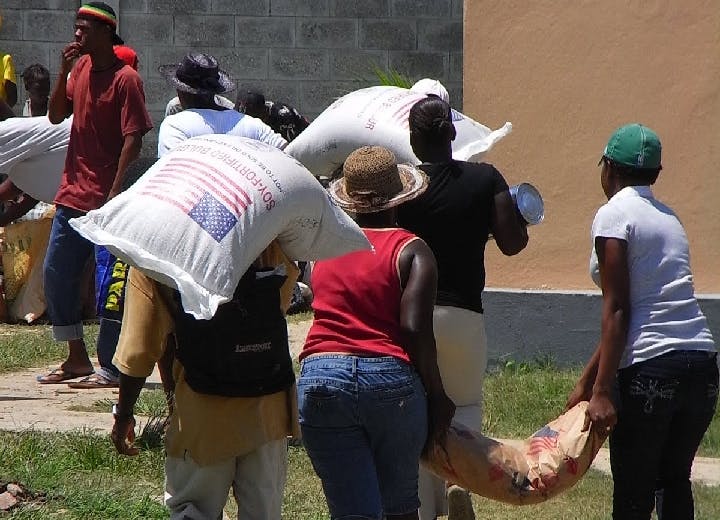Solving the Calculation Problem of Foreign Aid
– Michael Chernin
Improved ways of delivering foreign aid can reduce planning problems and bring donors and recipients closer together.
About 10 years ago, a central “Feeding America” office — an umbrella network of U.S. food banks — sent large shipments of potatoes to an Idaho food bank, baffling its staff members. The state is an iconic potato producer and has its own Potato Commission; it hardly needed more spuds. Unfortunately, this confused aid effort was not an isolated incident. It had precedents in many parts of the world, including Afghanistan, where Uncle Sam’s efforts to build dams and resettle farmers to newly irrigated land decreased agricultural productivity by roughly 50 percent. The farmers, it turned out, had no idea how to work with the increased water flows.

These two initiatives, thousands of miles apart, failed for largely the same reason. Economists call it the “calculation problem”: a shorthand for the use of economic planning instead of market-based allocation of resources. As economists have long recognized, the most reliable information for making these critical allocations comes from prices, which reflect the real-time supply and demand of resources, labor, and products. A classic example of how prices facilitate rational decision-making is Leonard Reed’s 1958 short story “I, Pencil,” which describes the countless factors involved in the production of a self-described “ordinary wooden pencil.” The takeaway from Reed’s story is that no single person knows how to make a pencil, a product that results from a globe-spanning, coordinated effort of loggers in northern California who cut the wood, miners off the coast of India who mix graphite with Mississippi clay, farmers who raise animals whose fat is mixed with sulfuric acid from Mexico to strengthen the graphite, and so on. This potentially mind-boggling process works because it is ordered by prices, which help people judge how much of certain materials to buy, how to use them, and when to start and stop working.
Making enough pencils to meet demand is not fundamentally different from providing foreign aid: both tasks require the cooperation of millions of people from around the world. But without the guidance of prices, coordination in the foreign aid arena is usually centrally planned by aid organizations, which decide who will receive predetermined aid in predetermined amounts. Because aid is given and not sold, donors lose critical information, and thus Idahoans receive truckloads of potatoes and Afghan farmers are left with drowned crops.

Because aid is given and not sold, donors lose critical information, and thus Idahoans receive truckloads of potatoes and Afghan farmers are left with drowned crops.
The Idaho potato blunder prompted confusion locally, but outrage erupted globally in February 2015 when pictures surfaced showing Islamic State militants handing out food that had been seized from the United Nations’ World Food Programme, with “Islamic State in Syria” labels pasted over the original UN logos. (This was hardly the first time food aid was seized and redistributed by extremists. In the early 1990s, the self-proclaimed Islamic Emirate of Kunar—a Salafi proto-state in Afghanistan—hijacked USAID trucks carrying wheat.) The world saw yet another reason to rally to the fight against the Islamic State. But this incident was also indicative of a larger foreign aid “calculation problem”: the difficulties that donors frequently face in delivering aid to those they are trying to help.

If the calculation problem is a headache for American food banks, it takes another form entirely in Syria. The Syrian civil war is a complex emergency in which noncombatants are victims of political instability, economic stagnation, abrupt demographic shifts, warfare, and religious persecution. Neighboring countries struggle to provide shelter for more than four million refugees who have been embroiled in the greatest humanitarian crisis since World War II. So far, the United States has committed more than $4.5 billion in aid to local governments and regional nongovernmental organizations, and at a February 2016 conference in London, other UN member states recently pledged to provide a collective $10 billion in humanitarian aid for Syria. Speaking about the fundraising efforts, British prime minister David Cameron said that they would result in “millions of people receiv[ing] life-saving food and medical care and shelter.” Making good on this promise is clearly not a question of will, but rather capability to make effective aid decisions in a chaotic and constantly-changing environment.
The calculation problem is not new, and neither is massive government-to-government or private-public foreign assistance. After World War II, the United States’ historic Marshall Plan provided critical aid for Europe’s economic recovery, President John F. Kennedy’s “Alliance for Progress” channeled billions in aid for South America, and President George W. Bush’s PEPFAR — the President’s Emergency Program for AIDS Relief — has spent over $52 billion since its inception. But despite good intentions, instances of information and execution failures abound. These include the unintended shattering of local agricultural markets through surplus commodities heaped on villages in Africa, and withering of lands in El Salvador because of undue trust in the government’s inefficient land reform policies. In 2010, U.S. Provincial Reconstruction Teams (PRTs) stocked Afghan hospitals with high-tech medical equipment, which was delivered with no explanation and no plan for maintenance. The majority of digital x-rays and scialytic lamps just sat around, according to a report from Doctors Without Borders, “collecting dust.” The challenge was not the absence of strategic vision — PRTs generally knew what they wanted to accomplish — but rather their understanding of what was possible.
But despite good intentions, instances of information and execution failures abound. These include the unintended shattering of local agricultural markets through surplus commodities heaped on villages in Africa, and withering of lands in El Salvador because of undue trust in the government’s inefficient land reform policies.

The key is not only delivering aid, but improving welfare by delivering the right kind of aid. When the 2010 Haitian earthquake struck, the London-based Overseas Development Institute investigated preferred modes of aid among Port-au-Prince camp residents, and found they overwhelmingly preferred cash to goods. Deliveries of the latter were slow and poorly managed, while money arrived quickly and provided economic flexibility. But assumptions made from thousands of miles away about the state of local economies robbed Haitians of those benefits. Amid all the chaos, donors found it unthinkable that Haitian markets continued to function, and as a result they kept sending boxes of clothes and grain despite the fact that, according to the institute’s study, the country’s markets were up and running “within days of the earthquake.”
Part of the blame for what might seem like tone-deaf aid responses often rests with overreliance on comfortable bureaucratic solutions. Generally, the calculation problem is not met with decentralization or revamped feedback mechanisms, but rather with calls for better interagency coordination. This approach misses the point. Sometimes, the right information simply does not exist — especially in the absence of prices — and no amount of coordination can help. Additionally, improved communication between the refugees in camps, workers who distribute resources, and donors can only go so far given the current system for allocating funds.
Sometimes, the right information simply does not exist — especially in the absence of prices — and no amount of coordination can help.
Critics say that near the top of the relevant chain of foreign aid problems — at least in the United States — is the Senate Appropriations Subcommittee on State, Foreign Operations, and Related Programs, which is responsible for giving money to nongovernmental organizations and foreign governments. In his book Doing Bad by Doing Good: Why Humanitarian Action Fails, George Mason University economist Christopher Coyne condemns the appropriations process for creating incentives to spend money for the sake of spending money. Coyne—a pioneer of thinking about aid from an economic perspective—notes that if an organization ends up meetingits goals by using fewer resources than expected, Senate committees slash its budget. To avoid this, Coyne says, aid groups sometimes “spend down” their budgets on “observable outputs” that sound good in congressional hearings but are not always effective. Annual reviews generally report the number of hospitals built or children enrolled in primary school, but these metrics cloud the picture if students or patients face unexpected obstacles because of warfare or — less dramatically — poorly staffed institutions. One solution at the policy level would be setting clearer and quantitative goals like improving test scores among children in refugee camps rather than just building schools.
It is not only terror attacks or poor metrics that spell doom for aid delivery, though. There are broader systemic challenges, such as the quality of a state’s legal system. We know that well-defined property rights are critical to economic development and stability. Intellectual property law, for example, helped spur one of the most important developments in human history — the Industrial Revolution — because it helped people keep the benefits of their inventions. Similar laws could help in the aid arena, too. Strong legal protections enable people to make the best use of what they earn, or, in the case of foreign aid, what they are given. Donors need a heightened sensitivity to the kinds of legal institutions that exist in states or even within refugee camps. One unfortunate example of how aid is co-opted comes from Nepal, where the government’s siphoning of foreign assistance has stunted efforts to rebuild after a devastating earthquake killed more than 8,000 people. Ultimately, if property can be randomly repossessed by a corrupt government or other citizens, incentives to invest in long-term projects are crushed as entrepreneurial endeavors become a waste of precious resources.

If part of the calculation problem stems from decision makers working with incomplete information, one solution is to limit the number of decisions they have to make. The use of Direct Cash Transfers — mobile banking systems that let donors give directly to recipients — can help organizations deal with aid poachers, poor infrastructure, and information failures by harnessing cheap mobile technology and crowdsourcing. Citizens simply verify their identity by using a PIN code, which allows them to pay bills, transfer funds, and monitor savings on their phone. Sometimes, e-currencies are used in the absence of a stable monetary environment. Devolving decision making to the individual level allows the person with the most complete knowledge — the recipient — to engage with local markets to fulfil his or her needs. This type of arrangement works in conflict areas like Somalia and Zimbabwe because transfers can bypass terrorists and crooked politicians while building confidence in the state at-large.
Donor states also have to respond to, and not just condemn, the kickback schemes and distribution routes used to transfer aid from governments to local nongovernmental organizations to civilians. Debacles such as the Islamic State’s distribution of World Food Programme aid are, if not totally preventable, less likely to occur with input from people who are actually able to assess on-the-ground realities. Vertical information sharing between groups that track and confront security challenges in real time can help limit unknown variables. The U.S. Agency for International Development’s 2016 plan, which mandates a closer working relationship with the State Department’s Bureau of Counterterrorism and the Department of Defense, is a promising start.

There are national security, economic, and humanitarian arguments to be made for revamping how international aid is delivered and assessed. As 2015’s aid packages expire, donors everywhere have an obligation to step back and examine whether their current models fit their current challenges, from Idaho to Syria. Bridging the gap between policy and academia on issues of microeconomic incentives, security, and corruption would illuminate why decentralization is the key to effective aid. Before any progress is made, though, donors have to understand that although the ideals underlying foreign assistance are noble, so is a willingness to recognize when parts of a system are not working and adapt.
* * * *
Michael Chernin works in the Office of the Director, President and CEO at the Wilson Center where he assists the President and the Strategic and National Security Advisor to the President. He has worked at the Watson Institute for International and Public Affairs and served on the editorial board of the Brown Journal of World Affairs.
